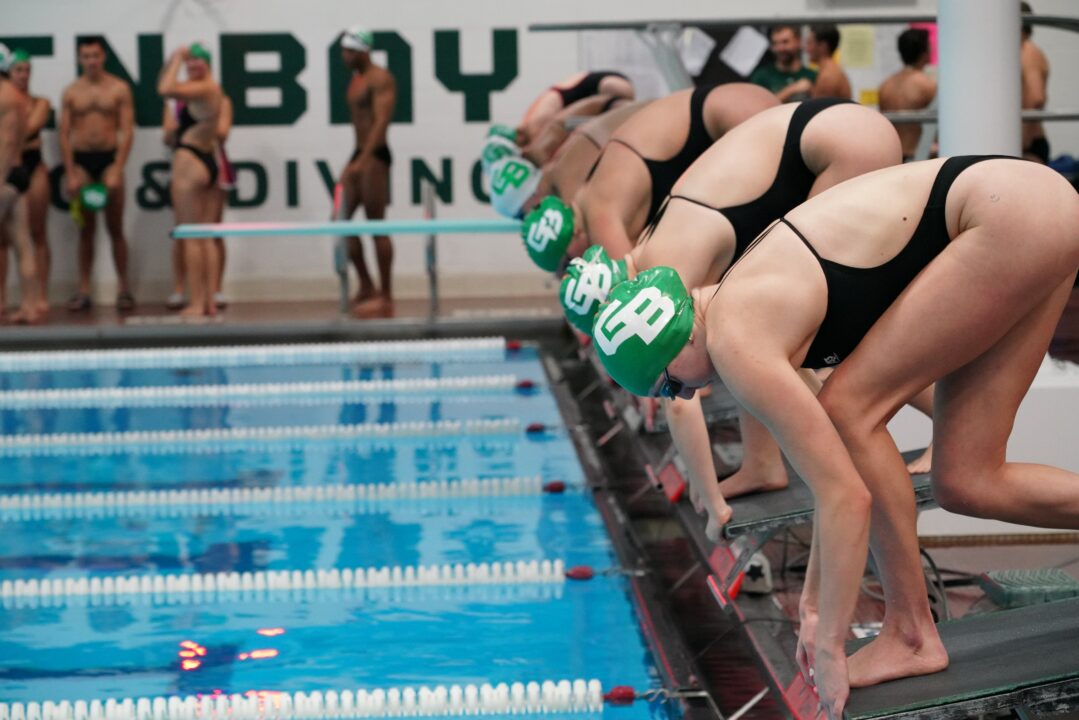The University of Wisconsin – Green Bay has reinstated their athletics tuition waiver program for the varsity swimming & diving team four years after it was eliminated. This will coincide with the reinstatement of scholarships for the program beginning next season.
The cut was made four years ago in an effort to “right-size the revenue-expense profile” for the athletics program without eliminating any teams, athletics director Charles Guthrie said. The decision was made at the time to eliminate waivers from the swimming & diving and nordic skiing programs rather than spreading the cuts across all of the school’s athletics programs.
“This is a major step in the right direction to get the program back to its winning history,” Phoenix head coach Alex Lewis told SwimSwam. “Prior to the tuition waiver cut the program was always a major player in the conference, winning countless Horizon League Championships.
Lewis took over the program in November 2021, bringing some stability back to the program. The team competed in an abbreviated season in 2020-2021, and head diving coach Tom Stover led the team through its first two meets of the 2021-2022 season.
While a few swimmers had scholarships grandfathered in from the prior program through the 2021-2022 season, Lewis says most transferred. With the tuition waivers reinstated, the program will have about 50% of the maximum allowed Division I scholarships for swimming & diving restored. That’s the equivalent of about 5 scholarships for men and 7 for women (though they will likely be shared among more swimmers than that).
“The University and City have all the momentum right now and swim and dive will look to capitalize on this by making sure we bring in athletes that compete at the top of the conference but also make a difference day in and day out culturally,” Lewis said. “Green Bay was just voted the number 1 place to live in the United States. It will host he NFL Draft in 2025, and the university reaching over 10k students for the first time in school history.”
The story of UWGB’s enrollment growth is a success story in the Midwest where many small and mid-sized colleges and universities have seen the opposite trend. Fall undergraduate enrollment increased by 27.5%, including a 10.6% increase in the size of the freshman class.
UWGB already has relatively-low tuition: for full-time in-state students, tuition runs about $4,000/semester, while for non-residents it runs about $8,500 per semester. The school also has reciprocity programs with Minnesota and other Midwestern states that fall between those resident and non-resident tuitions.
The UWGB men and women each finished 6th out of 6 teams at last year’s Horizon League Championships. The women were 172 points behind Cleveland State while the men were 32 points behind in-state rivals Milwaukee.
The men’s team were perennial conference title contenders in the 2000s and won the Horizon League title in 2002. The women’s team was the dominant program of the decade, winning titles every year from 2005 through 2011 under coach Jim Merner.
Based on a Swimulation of the women’s and men’s Horizon League meets using season-best times so far, the Phoenix will again be fighting an uphill battle this year to get out of last place in the conference, but there are still some highlights to hang their hats on.
For the women, junior Esther Oswald swam a best time in the 100 back (57.27) mid-season and ranks 7th in the conference and also dropped half-a-second in the 200 back to rank 9th.
For the men, sophomore Max Kasal swam a best time of 44.85 in the 100 free mid-season that ranks him 6th in the conference.
UWGB is back in action on Saturday, January 20th with a dual meet against D2 program Northern Michigan.

Is a “tuition waiver” the same a scholarship, or is there some legal difference between the two?
Tuition waivers are scholarships. It just means the program can only offer athletic scholarships that cover a student athlete’s tuition to the university. The remaining cost of attendance (housing, meal plan, books, etc) is paid by the student athlete.
Great news!